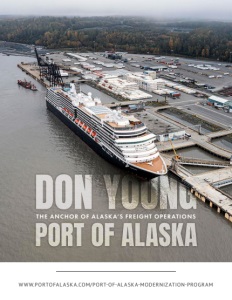The Anchor of Alaska’s Freight Operations
Exploring a methodical approach to port modernization in Anchorage
Over the years, the municipality of Anchorage, Alaska, has become known as a critical gateway for commerce, security, and economic resilience in the region.
That is entirely thanks to the presence of The Don Young Port of Alaska. Since its ribbon-cutting in September 1961, the Don Young Port of Alaska has played a crucial role in the state’s economic infrastructure.
Originally built to attract commercial business, the port became indispensable following the catastrophic 1964 Alaska earthquake. With the devastation of ports in Seward, Valdez, and Homer, Anchorage’s fledgling facility emerged as the primary maritime gateway for the state.
To honor this history of resilience, the port continues to advance with long-term redevelopment and modernization as the focus.
Leadership efforts seek to remedy aging infrastructure, improve seismic resilience, and increase cargo-handling efficiency.
To accomplish this, strong partnerships with federal, state, and local agencies have been established to secure funding and legislative support. The port also leverages cutting-edge technology for logistics, security, and environmental sustainability to ensure that it meets modern maritime operational standards
Regarding its people, the port has strengthened its workforce development initiatives to ensure that employees can also meet evolving industry demands.
Additionally, leadership is enhancing maintenance protocols and implementing innovative sustainability practices that will improve long-term functionality and reduce environmental impact.
With all of these elements combined, the Don Young Port of Alaska has emerged as a modernized, resilient, and efficient hub, serving as the backbone of economic growth, supply chain reliability, and, ultimately, the well-being of most Alaskans.
The port’s savvy yet practical approach to modern expansion solidifies its role as a vital link in Alaska’s infrastructure for years to come.
A State Pillar with a Modern Plan for Adaptation
Today, the Don Young Port of Alaska continues to serve as the main port of entry for essential goods.
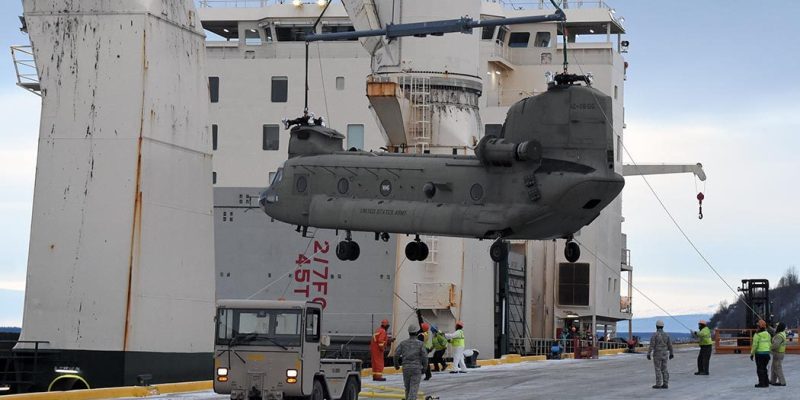
Given Alaska’s geographical challenges—limited road access, no rail connections to the lower 48 states, the state relies heavily on maritime transport.
“90% of the freight that comes into Alaska comes in on the water. Half of that crosses our docks here in Anchorage, and half of what crosses our docks, continues on to destinations along the road and rail system that touch about 85% of the state population,” says Port Director Steve Ribuffo.
Unlike many ports operating under independent port authorities, the Don Young Port of Alaska is uniquely governed as a department of the Municipality of Anchorage, reporting directly to the Anchorage Assembly and the mayor.
So, beyond its commercial function, the port has earned designation as a commercial strategic seaport by the Department of Defense. It also plays a key role in military deployments and disaster response initiatives, working closely with FEMA and the Department of Homeland Security.
“We have a mission directly responsible to the army for their deployments and redeployments of troops and equipment in… and we have a responsibility to the State Department of Homeland Security and Emergency Management, as well as FEMA, to be part of any disaster response and recovery plans for major disaster responses that might occur in the State, whether they be manmade or natural,” Ribuffo explains.
Having considered the potential for future natural disasters, port leadership fully acknowledges the urgency of aging infrastructure and seismic vulnerability.
As a solution, the Don Yong Port of Alaska has embarked on a transformational initiative: the Port of Alaska Modernization Program.
While the last significant infrastructure addition was a petroleum dock in the mid-1970s, decades of accelerated low-water corrosion have severely degraded the port’s wharf piles, requiring a complete overhaul.
The modernization effort, which began in 2012, aims to replace the entire marine terminal facility. The first milestone was reached in 2022 with the completion of a new petroleum and cement offloading dock.
The next phase involves demolishing and reconstructing cargo docks, ensuring their resistance to seismic events while still meeting contemporary industry standards.
“It’s going to be a program that will cost about 2 billion dollars, maybe a little bit more before it’s done. But it’s a total replacement of the entire marine terminal facility structure that we have here, and it’s a really big deal for Alaska. It’s probably the largest infrastructure program the State of Alaska has ever seen!” Ribuffo exclaims.
Unlike expansion projects driven by potential or immediate commercial growth, this initiative is a practical necessity. As the backbone of the state’s supply chain, the port maintains continuity in delivering essential goods.
So, due to Alaska’s steady population and relatively small manufacturing base for export, the port’s maintenance represents protection from seismic events, both physical and economic.
Efficient Operational Models and Relationships
Despite its responsibilities, the port operates with a lean staff of just 23 personnel. Of these, 13 focus on maintenance, while the remaining team oversees operations, finance, engineering, business development, and security.
Functionally, the operation can best be described as a landlord-port model in which private-sector operators manage commercial activities.
In contrast to many ports with independent boards, the Don Young Port of Alaska integrates into the broader municipal framework. “If we need HR, legal, or similar support, we reach out to the municipality of Anchorage’s general government staff to provide those services for us, “Ribuffo states.
This structure presents both advantages and challenges. While the port benefits from municipal resources, it must navigate the constraints of shared government staffing, which sometimes results in operational delays.
To mitigate these constraints, the port maintains partnerships with external engineering firms and program management contractors to supplement in-house expertise.
“We have three engineering services contracts for companies that have the expertise that we don’t have on staff… The modernization program is managed by another contractor all in and of itself,” Ribuffo explains.
Due to the port’s vital commercial activity, all contracts must comply with the rule that they must not interfere with the port’s commercial activities, disrupting Alaska’s economic landscape.
To ensure proper accounting, the port team utilizes SAP as its core enterprise resource planning system, ensuring streamlined operations in finance, HR, and billing.
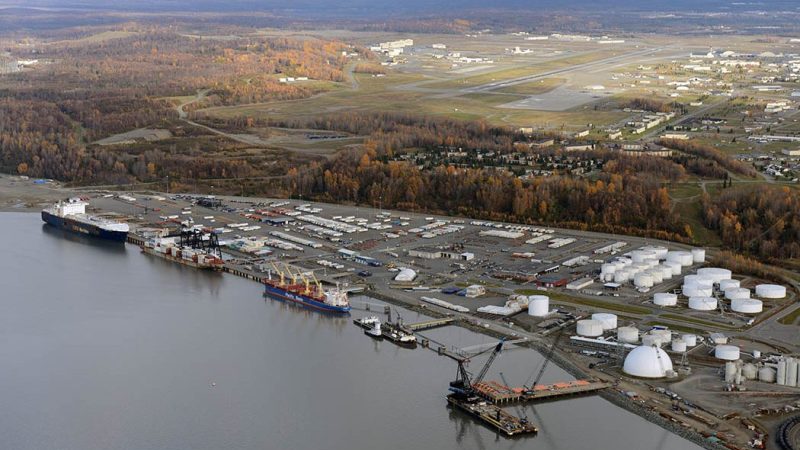
While standalone security and berth reservation systems exist, every piece of technology must align with the broader municipal IT framework to ensure robust cybersecurity and operational stability.
“The technology we have is not very sophisticated… and we’re able to successfully conduct business without having to be sophisticated,” Ribuffo states. In an era where digital transformation dominates the global supply chain conversation, the Don Young Port of Alaska takes a more measured approach.
For example, the port’s legacy infrastructure, including three ship-to-shore cranes built over 50 years ago, exemplifies this philosophy.
With no direct digital connection, they remain impervious to modern cyber threats. This simplicity has proven to be an asset, enabling the port to focus on function over unnecessary complexity.
“Simple works for us,” Ribuffo explains. “Simple keeps us kind of unhackable.”
Beyond its logistical responsibilities, the port plays a crucial role in fostering community relationships and economic development.
Recognizing its proximity to both a military base and a local neighborhood, The port prioritizes transparency and engagement. As Joint Base Elmendorf-Richardson’s designated commercial strategic seaport, the facility also plays a fundamental role in national security logistics.
This collaboration ensures that military operations receive essential supplies efficiently, reinforcing the port’s value beyond just commercial shipping.
Regarding the local community, Ribuffo and other employees often attend community council meetings to address concerns, dispel myths, and maintain open lines of communication with residents.
Furthermore, the port actively introduces young students to the maritime and logistics industries.
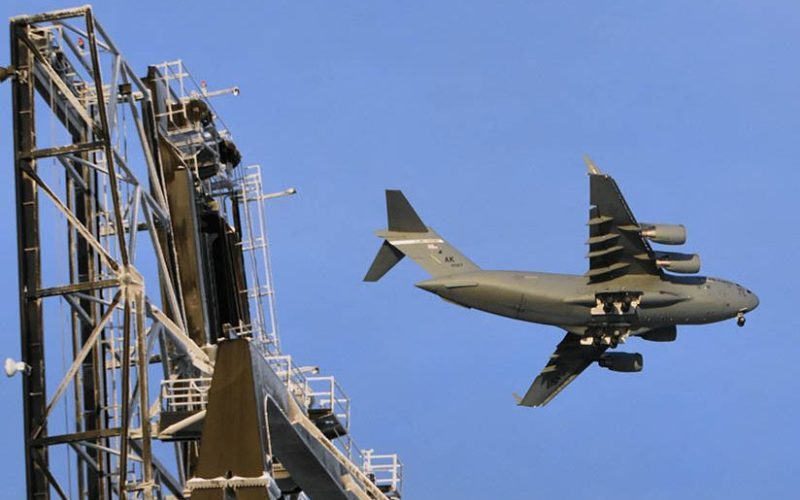
By hosting elementary school tours, it provides firsthand exposure to the essential functions of port operations. “There’s a lot of good paying jobs that come out of working on the port,, so it’s nice to expose kids to these things, and what young kid doesn’t like truck drivers who honk their horns when they wave at them?” Ribuffo remarks.
These interactions not only inspire future careers but also enhance public awareness of the port’s significance.
Looking to the Future of the Port
The future of the Don Young Port of Alaska is firmly anchored in its modernization efforts.
As it progresses through the replacement of critical infrastructure, the port remains steadfast in its mission: ensuring the uninterrupted flow of goods to Alaskans, maintaining military readiness, and reinforcing its role as a vital component of the state’s economic and security framework.
By balancing long-term strategic planning with daily operational efficiency, the port exemplifies resilience in an environment where logistical challenges are a constant reality.
The ongoing modernization project is poised to bring state-of-the-industry infrastructure online, significantly improving operational efficiency and creating new opportunities for expansion.
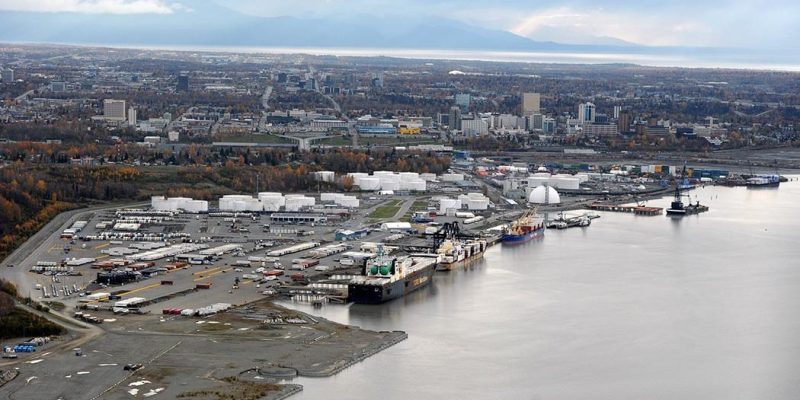
While the port currently handles a high volume of inbound goods, there is untapped potential in outbound shipping.
“We have four container ships a week that come in here to support the population of Alaska. 80% of the containers that those folks bring in and then take back have nothing in them. So, there’s lots of opportunity without ever having to add more real estate down here to add more business,” Ribuffo confirms.
With strategic investments in Alaska’s mining sector, the port could become a key export hub for mineral resources. As infrastructure improves, connecting remote mining operations to the port via rail becomes increasingly feasible.
As Ribuffo succinctly puts it, “We don’t have the economic or geographic ability to have redundancy in Alaska, so we have to lean toward resiliency.”
This pragmatic approach ensures that the Don Young Port of Alaska remains a steadfast pillar of the state’s economy, prepared for both present demands and future opportunities.
Through strategic planning, community engagement, and a modernization effort grounded in operational efficiency, the port is set to continue its legacy as Alaska’s most critical transportation hub.
The next phase of development promises to reinforce the port’s role as an indispensable asset for the state’s economic stability and growth, whether through improved infrastructure, increased cargo capacity, or enhanced seismic resilience.
At a Glance
Who: The Don Young Port of Alaska.
What: The state of Alaska’s primary maritime gateway.
Where: Anchorage, Alaska.
Website: www.portofalaska.com/port-of-alaska-modernization-program
PREFERRED VENDORS/PARTNERS
At Jacobs, we’re challenging today to reinvent tomorrow – delivering outcomes and solutions for the world’s most complex challenges – by providing end-to-end services in advanced manufacturing, cities & places, energy, environmental, life sciences, transportation and water. From advisory and consulting, feasibility, planning, design, program and lifecycle management, we’re creating a more connected and sustainable world.
Jacobs: www.jacobs.com
![]()

TOTE Maritime Alaska has proudly served as a critical shipping link to Alaska for over 50 years. With twice-weekly sailings between the Lower 48 and Alaska, TOTE provides safe, reliable ocean shipping to the Last Frontier. TOTE Maritime Alaska is a proud subsidiary of the TOTE Group companies, an industry leader in transportation and logistics.
TOTE Maritime Alaska, LLC: www.totemaritime.com
![]()
Udelhoven Oilfield System Services, Inc., founded in 1970, provides expert general contracting and oil production services. With a focus on safety, quality, and customer satisfaction, we offer comprehensive engineering, procurement, and construction solutions. Our commitment to excellence has earned us a strong reputation across industries and around the world.
Udelhoven Oilfield System Services, Inc: www.udelhoven.com
Manson Construction Co. has been building the nation’s waterways and marine infrastructure for 120 years. We offer innovative solutions and engineering expertise for prominent infrastructure and energy projects. Manson adapts to fulfill the changing and complex marine infrastructure demands of North America and the global community.
Manson Construction Co.: www.mansonconstruction.com
In an ever-globalizing world, the Alaska International Airport System (AIAS) stands out as a pivotal connector for business, travel, and economic development. With Anchorage and Fairbanks bridging continents, AIAS fuels prosperity and growth, ensuring Alaskans and global partners alike benefit from streamlined connectivity, world-class airport operations, and new endless possibilities.
AIAS
(The Alaska International Airport System): www.dot.alaska.gov/aias

